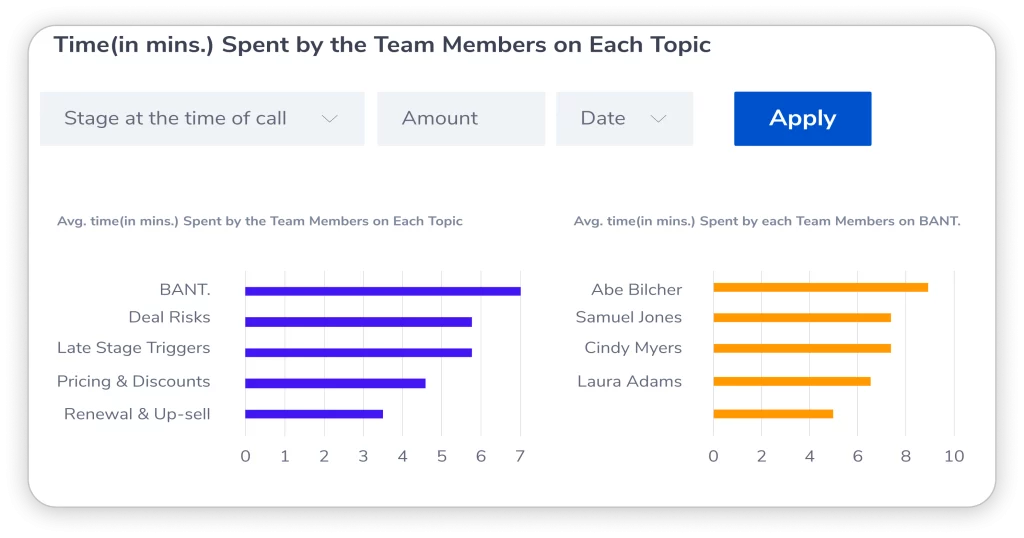Sales Pipeline Coverage Ratio: A Comprehensive Guide
Every salesperson understands the critical role of building a sales pipeline and sealing deals, but the truly successful ones also grasp the importance of precisely calculating and managing their pipeline coverage.
However, it’s common for sales teams to depend on outdated, piecemeal solutions or manual data collection methods. Such insufficient approaches lead to gaps in pipeline coverage, underperforming sales representatives, and unexpected revenue deficits. Consequently, organizations often fall short of their revenue goals, eroding sales leaders’ credibility among their colleagues.
For sales teams to implement winning strategies effectively, they need a strong foundation of quality leads and clear revenue objectives, both of which hinge on having adequate pipeline coverage. Sales professionals require effective processes and tools to evaluate the volume, quality, and readiness of their pipeline to meet their sales objectives.
In this discussion, we’ll cover all you need to know about the sales pipeline coverage ratio, including how to determine it with precision, the necessary coverage levels, and strategies for optimizing coverage to boost your productivity, performance, and forecast accuracy.
What is Pipeline Coverage?
Pipeline coverage refers to a metric used in sales to assess the size and potential of a sales pipeline in relation to the sales targets or quotas. It’s a way to measure whether there are enough deals in the pipeline to meet future sales goals, taking into account the current stage and potential value of each opportunity within the pipeline.
In essence, pipeline coverage gives you a ratio that compares the total value of all opportunities in your sales pipeline (regardless of their stage) to the sales target you need to achieve in a given period. For example, if your sales target for the quarter is $100,000 and the total value of all opportunities in your pipeline is $300,000, your pipeline coverage ratio would be 3:1. This indicates that you have three times the amount of potential sales compared to what you need to hit your target.
How to Calculate SPC Ratio
The formula for calculating the Sales Pipeline Coverage ratio is straightforward:

Consider a scenario where the total value of your sales pipeline is $1.5 million, and your sales target for the quarter is $500,000. In this case, the SPC ratio would be 3:1, suggesting that you have three times the potential sales needed to meet your quarterly target.
A higher ratio indicates a healthier pipeline with more potential deals relative to the target. However, the ideal ratio can vary by industry, the average sales cycle, deal size, and the efficiency of your sales process. Common benchmarks suggest a ratio between 3:1 and 4:1 is healthy, but this can vary widely.
Importance of SPC Ratio in Sales Management
The SPC ratio is more than just a number; it provides deep insights into the sales process and forecast accuracy. Here are some reasons why it’s a pivotal metric:
- Forecasting Accuracy: It helps in predicting whether the sales team is likely to meet, exceed, or fall short of sales targets, enabling proactive adjustments.
- Resource Allocation: By understanding the pipeline’s health, managers can allocate resources more effectively, focusing on high-potential deals or areas needing support.
- Identifying Gaps: A low SPC ratio might indicate insufficient leads or opportunities, prompting strategies to replenish the pipeline.
- Performance Analysis: It aids in evaluating the sales team’s performance, showing how effectively they are converting opportunities into wins.
Best Practices for Managing SPC Ratio
Achieving an optimal SPC ratio requires strategic management of the sales pipeline. Here are some best practices:
- Regular Review: Continuously monitor the SPC ratio to spot trends, dips, or spikes, which could indicate underlying issues or opportunities. This will help you identify trends, adjust your sales strategies, and ensure that your pipeline remains healthy relative to your sales targets.
- Qualification Criteria: Ensure that the sales pipeline is filled with quality leads by setting stringent qualification criteria, which will contribute to a healthier SPC ratio.
- Sales Process Optimization: Streamline the sales process to improve the speed and efficiency of moving opportunities through the pipeline.
- Training and Development: Invest in training your sales team on best practices for lead nurturing, negotiation, and closing to improve conversion rates.
- Leveraging CRM Tools: Utilize CRM software to gain insights into the pipeline and manage opportunities effectively, ensuring that the SPC ratio reflects an accurate picture of the sales landscape.
- Align with Sales Meetings: Schedule pipeline coverage reviews in conjunction with regular sales meetings or performance reviews to facilitate discussion and strategic planning based on the latest data.
- Be Adaptable: Be prepared to adjust the frequency of your measurements in response to significant changes in your business environment or sales performance.
By measuring your pipeline coverage at the right frequency, you can ensure that your sales team remains agile, informed, and equipped to adapt their strategies to meet and exceed sales targets. This proactive approach to sales management helps in identifying potential issues early, enabling timely interventions to keep your sales efforts on track.
Conclusion
The Sales Pipeline Coverage ratio is an invaluable metric for any sales organization. It offers a clear view of how well your sales pipeline aligns with your targets, providing a basis for strategic decision-making and performance improvement.
By understanding, monitoring, and acting on this metric, sales leaders can better navigate the complexities of sales management, leading to more predictable and successful outcomes.
In the fast-paced world of sales, the SPC ratio is not just a number—it’s a compass that guides sales teams towards their goals, ensuring that every opportunity is optimized for success.


